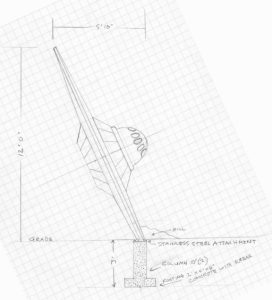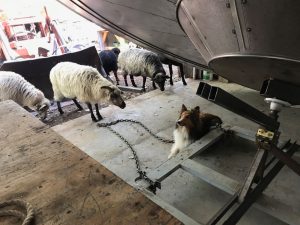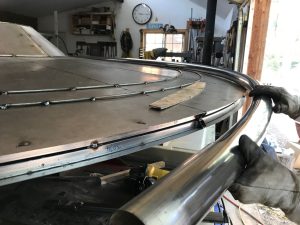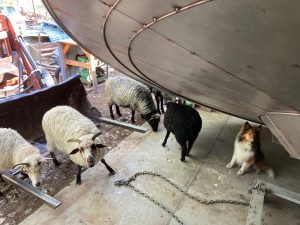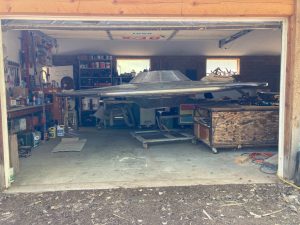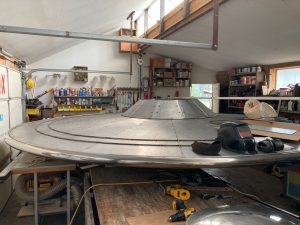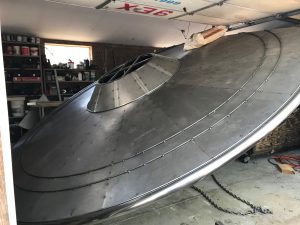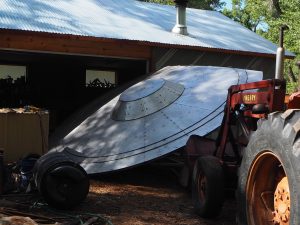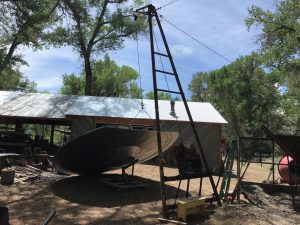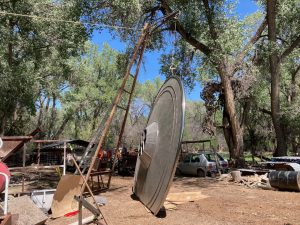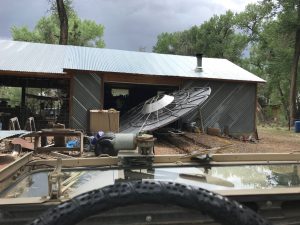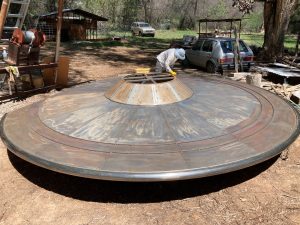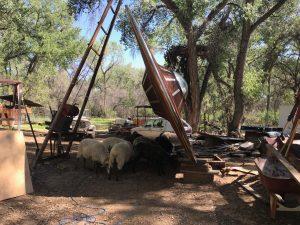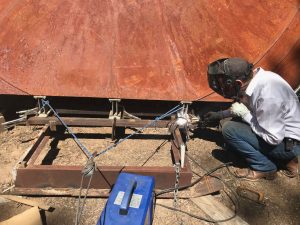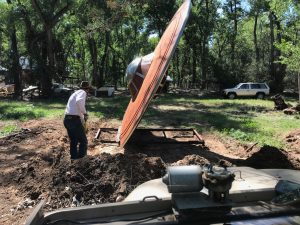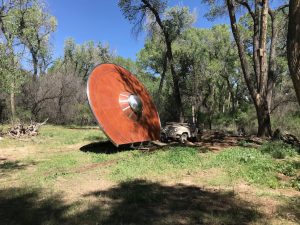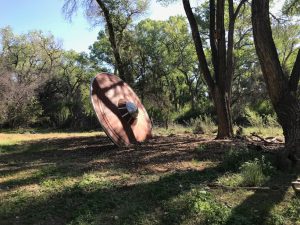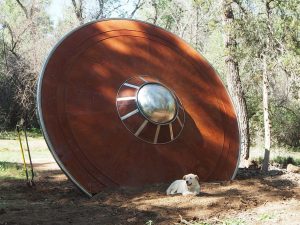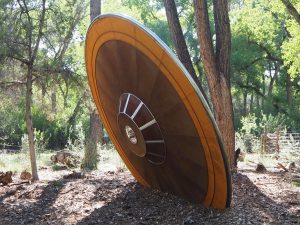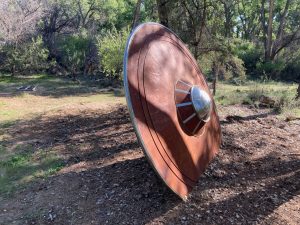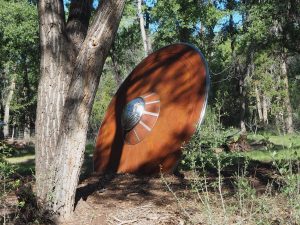A spaceship sculpture
For sale. IMPACT has been selected to be part of the Southwest Artists Series Purchase Initiative, and is listed in the NM Art in Public Places catalog (1% for Art Program) for municipalities. It is also available for private purchase. Contact Bob Davis via Facebook Messenger, or email rtdavisartist at gmail.
Drop by and see it at its current temporary installation next to Sky Coffee, in the Railyard Art District, Santa Fe NM:
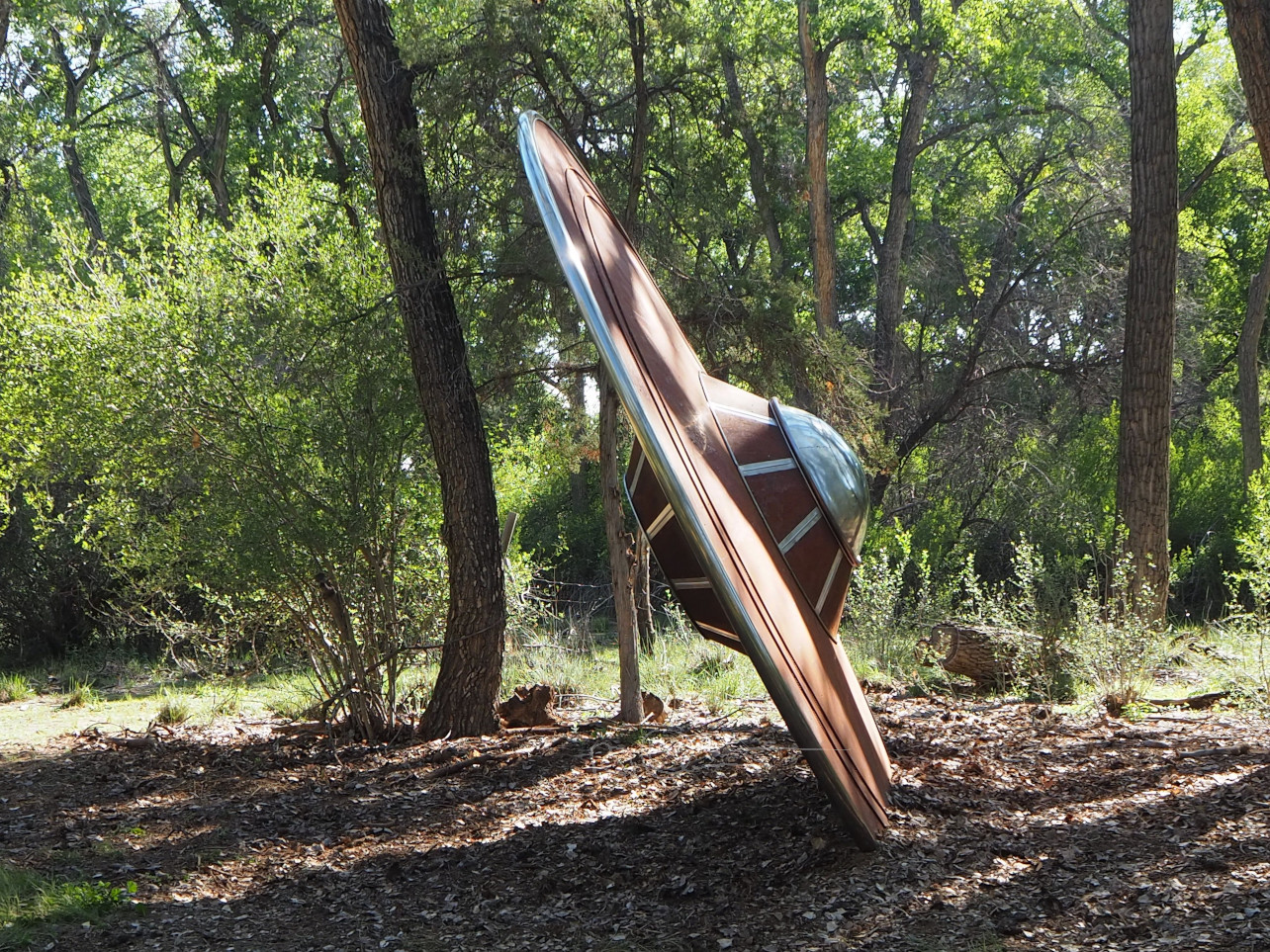
The Vision
This artwork, titled IMPACT, is in the form of a crashed flying saucer. It is fifteen feet in diameter, and appears to be stuck in the earth at a steep angle. It has a welded tubular steel internal structure that has a skin made of cold rolled steel with stainless steel trim. The cold rolled skin has a rust patina, and the stainless parts will remain shiny. The sculpture also has stainless steel internal support structure that attaches to a below-grade base that holds it safely in position. The surfaces of the sculpture are smooth, and do not have sharp projections. This is an extremely sturdy and climate resistant artwork that has been specifically designed to be outdoors in New Mexico.
New Mexico is a land of invasion. From the many native cultures arriving at different times to the arrival of the Spanish, and onward through the influx of the many cultures that we call American, the place has become a veritable ethnographic layer cake. I think this environment was the perfect catalyst for the imagination-enhancing events at Roswell in the mid 20th century involving flying discs and/or weather balloon parts. This is the cultural canvas on and from which I have formed and informed this particular artwork. This work confronts the viewer with a large, physical, flying saucer. Everyone will recognize it as such, and all will bring their own feelings and biases towards UFOs and UFO crackpot culture. I would like to point out that some very smart folks have spent some time seriously considering the possibility of extraterrestrial life.
The brilliant scientist, Enrico Fermi, was sitting around a lunch table with a few other scientists at Los Alamos in 1950. The conversation had run to recent UFO sightings and the possibility of actual extraterrestrials, and then the conversation turned to other topics. Suddenly Fermi asked, “But where is everybody?” What he meant by this was given what we know of the size and age of the universe, why do we not see good evidence of other intelligent civilizations? This conversation was the beginning of what we call the Fermi Paradox. This item below is from Wikipedia:
The Fermi paradox is a conflict between the argument that scale and probability seem to favor intelligent life being common in the universe, and the total lack of evidence of intelligent life having ever arisen anywhere other than on Earth.
Most sane people would prefer to keep their fantasies as fantasies, and their realities as realities, not mixing them up. This work is a reminder that this particular shared fantasy could at any time be flipped by one good sighting. Lots of precedent here going back to H. G. Wells and the War Of The Worlds, so our psyches are sensitized to this possibility. I like to think of my work as similar to a duck hunter floating decoys to attract real ducks.
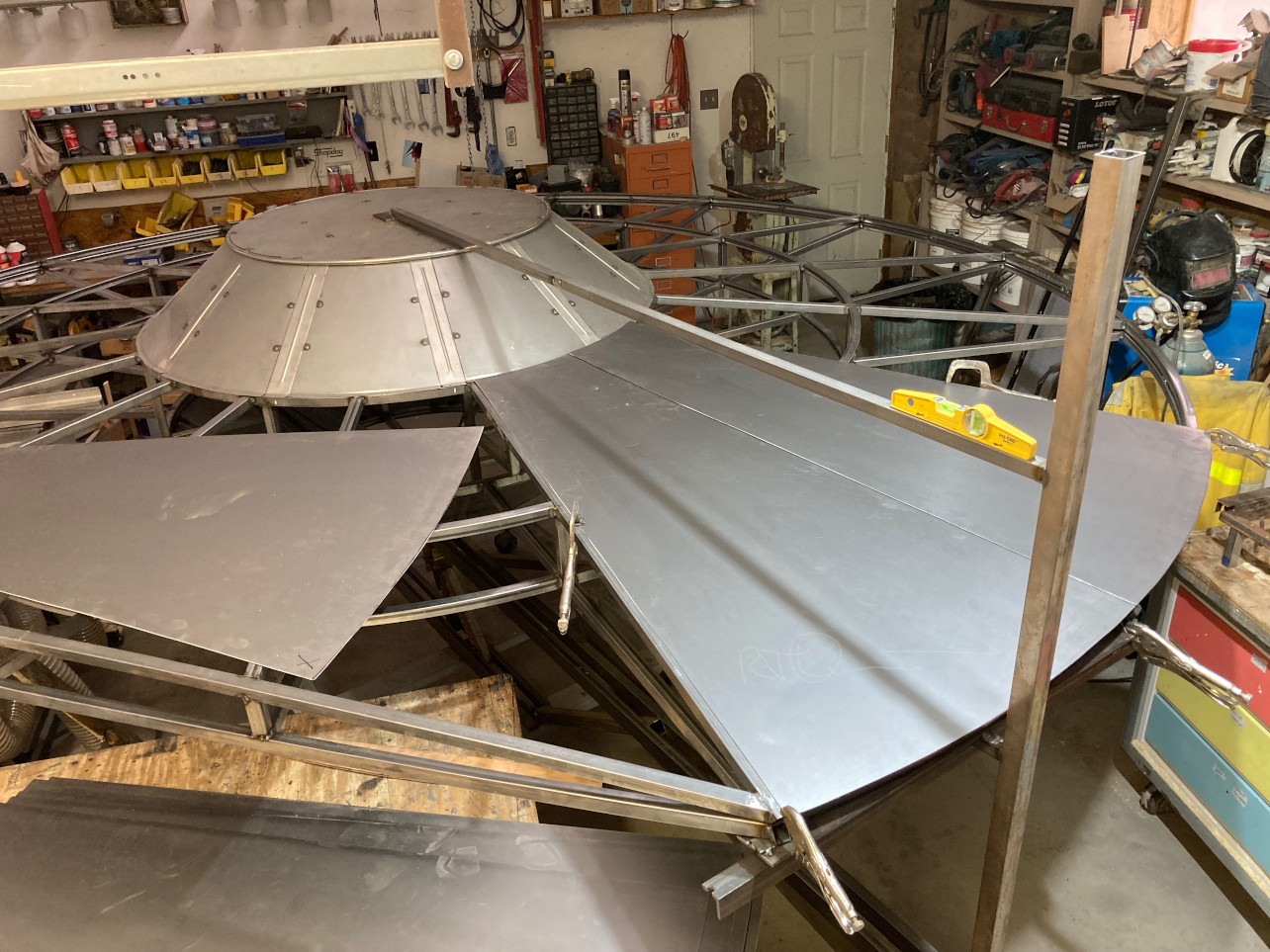
The Process
The armature of IMPACT is made of square steel tubing which is super strong and of reasonably light weight. Its flat surfaces are nice for clamping and welding, and it can be bent and shaped easily with the right tools. Building a round object with square tubing does make sense. Metal shaping was not as complex on this project as it has been on previous ones, but building a round thing presents its own set of challenges. This was built on a rotating stand that supported the ship top and bottom. What you see in this pic (above) is the steel support running to the top pivot from a vertical member that is connected to the bottom pivot—think bicycle fork. At the bottom right where the vise grips are sticking out is an indexing jig. This jig kept the plane of the outer edge in alignment with the center axis of the ship as it was constructed, and also maintained the spacing of the rib structure so that they would be evenly spaced around the circle. Because it turned on its axis, I did not need to keep moving my tools around the circle as construction progressed, I could stay put. Once the skin was on the first side, I took the ship outside, flipped it over and brought it back in the shop to finish the second side. It only fit through the door at an angle, so I had hinged the rotating support so that I could tilt the whole thing. You can see pics of this part of the process in the gallery section below.
